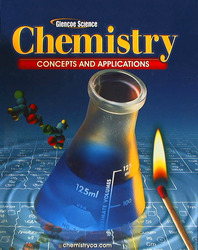
Chemistry: Concepts and ApplicationsChapter 14: Acids , Bases, and pHIn the NewsAtmospheric Chemistry--but Whose Atmosphere?October 2004It was only some four hundred years ago that a philosopher named Giordano Bruno speculated that there may be countless other worlds in the sky with countless other living things on them. As a result, the church burned him at the stake for heresy! It's ironic that today, most scientists who study the heavens assume Bruno's suggestion to be correct. We call those “other worlds” extrasolar planets, or planets orbiting stars other than our own. As for living things out there, we have no direct evidence for it yet. Still, many scientists also assume that alien life exists--indeed, that life of various sorts can probably be found all over the Milky Way. Of course, that doesn't necessarily mean advanced alien civilizations with floating cities and moon bases. But then, it could; we really don't know what shape life has taken on other planets. In fact, until just recently, it didn't seem possible to know. Extrasolar planets are just too far away to go there and see. But new technology is being created right now that is letting chemists right here on Earth check out alien worlds . . . and even scan them for evidence of life. Atmospheric Chemistry How can we do such a seemingly impossible thing? By understanding atmopsheric chemistry. That term means just what it sounds like: scientists now know a good amount about what kinds of chemical processes on a planet produce what kinds of atmosphere. For example, our atmosphere is rich in oxygen. That seems commonplace to us, but it's actually kind of odd. Why is that? Because oxygen combines with rocks, so you wouldn't actually expect a lot of “free” oxygen to be floating around. In order to have an oxygen-rich atmosphere, you need something that keeps producing more oxygen. What do we have on this planet that does that? You got it: plants. That's one way the metabolic cycles that plants and animals go through have an effect on the atmosphere itself. In fact, in all sorts of subtle ways, the presence of living things here alters the chemical composition of the air all around us. So, in principle, we could tell a lot about alien planets just by doing some atmospheric chemistry on them. But since even the closest stars are light years away from Earth, how can chemists here possible analyze atmospheres way, way out there? Answer? Starlight. Chemistry by Starlight The idea is this: the light from a distant star is shining at Earth. That's why we can see the star. That light is largely unimpeded, unless a planet circling that star happens to get in the way. When that occurs, we have a terrific opportunity, because we know that some of the light coming to us from that star is now passing through the atmosphere of the alien planet. The atmosphere, depending on its composition, will allow some kinds of light through and not other kinds. If we can tell the difference between what the starlight contains when the planet is behind it and what it contains when the planet is in front of it, we can tell what the planet's atmosphere is made of chemically. This sounds incredible, but with modern telescopes and computing power, it's possible. In fact, it's already been done. In 2001 the Hubble Space Telescope made the first observation of the chemical sodium in the atmosphere of a distant planet as it passed in front of star HD 209458. That's a start; we know the process works. Now, the dream of many starry-eyed chemists on Earth is to refine this process until we can check out extrasolar planets one by one, examining their atmospheric chemistries in detail. And who knows? Maybe one of them will show a little biology, too . . . Activity: Take a walk around your neighborhood today, or through some nearby woods if you can. Keep your eyes open for evidence of living things. What traces are left behind by life? How do living things alter the environment they live in? See if you can find ten examples of things that wouldn't be the way they are if not for the presence of life. Finally, see whether you can spot specifically chemical changes that are taking place right now because of living things. NASA: ABC News: Reactive Reports: Chemistry Web Magazine: Center for Atmospheric Chemistry: |  |















